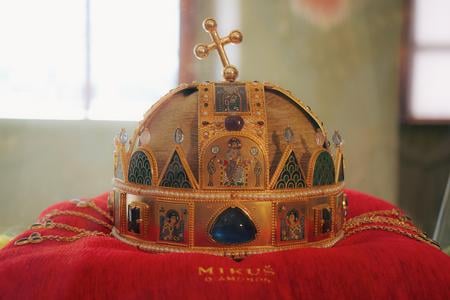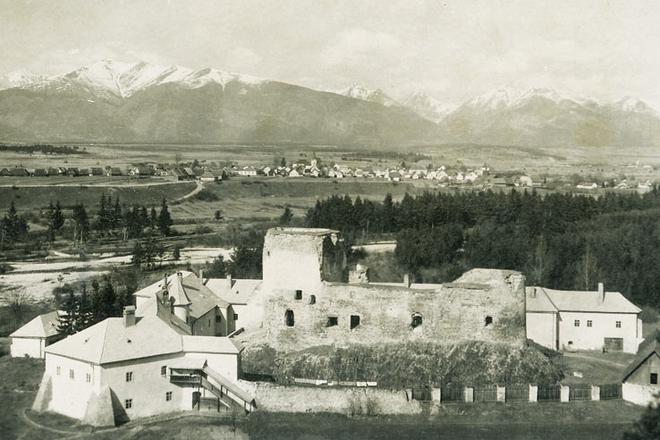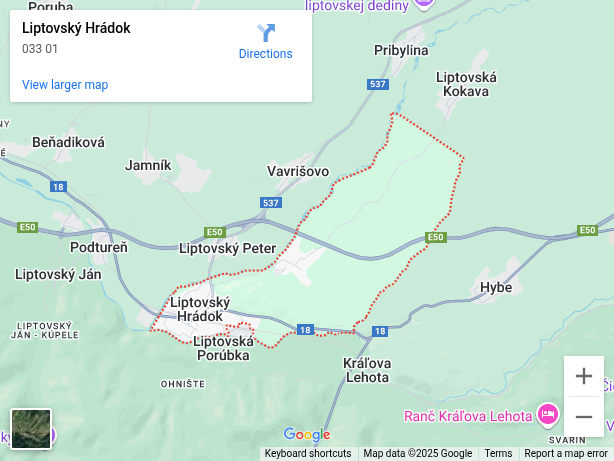Liptovský Hrádok is one of three castles in the historical region of Liptov in northern Slovakia.
Liptovský Hrad (Castle) was once the largest of the three, and was the highest castle in Slovakia, and even among the highest in Central Europe. Now only ruins remain.
Likava Castle, also a ruin, was the next biggest, while Liptovký Hrádok castle was the smallest. Liptovský Hrádok (hrádok meaning "little castle" in Slovak) was erected in the 13th century as a fortress guarding the crossroads of two roads, the Špišská road and the Magna Via, which ran from Vienna through Slovakia into Ukraine and Hungary to end in Romania.
Unlike most castles in Slovakia which were built on the sides or tops of rocky hills, Hrádok lies on a low plain. The thinking behind this is somewhat difficult to understand, especially when you consider that right next to the castle is a high rock called Skalka (the photographer of this image used it for his stand).
Thus Hrádok, because of its disadvantaged position, was overrun by almost every military attack it had to face, often both changing hands and undergoing reconstruction.
In the early 1600s, a new bride came to the castle, marrying the then current owner. Magdaléna Zai outlived not only this husband but four others, all of whom apparently died of natural causes. Some of the marriages were clearly mercenary, marrying the widow rather than coming up with the money to pay the king for it. During her lifetime, a manor house and other outbuildings were added to the castle.
During the Anti-Habsburg Uprisings, the St. Stephen’s Crown was kept here, and it was an important stronghold for the imperial army.

In 1803, fire struck the castle and the whole structure burned. Parts of the mansion were rebuilt, and the castle cellar and torture chamber were used for a prison. In 1960, some rooms were renovated to house a museum, which lasted 30 years before it moved.
The castle stood in ruins until 2001, when a private entrepreneur bought the castle and renovated the manor house as a luxury hotel. Since 2012, the castle and manor house have been open to the public with events and tours.
This postcard depicts the castle with the Western Tatras in the background as it looked in the 1930s.
This article was first published by The Slovak Spectator on August 18, 2008. It has been updated to be relevant today.

 Liptovský Hrádok in the 1930s, with the Western Tatras in the background. (source: Branislav Chovan)
Liptovský Hrádok in the 1930s, with the Western Tatras in the background. (source: Branislav Chovan)
